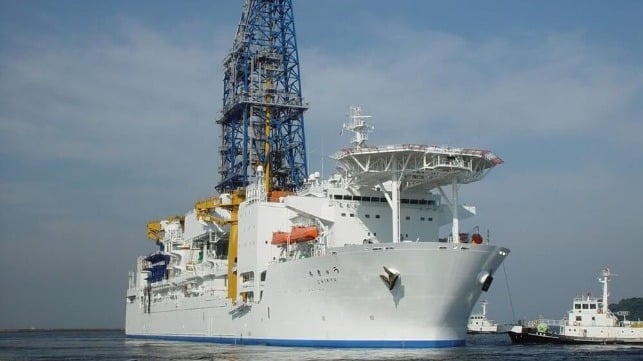Japan Plans Test of Seabed Mining Systems Next Year

Japan's government is gearing up for a trial-scale project to recover strategic minerals from seabed mud in the country's own EEZ, starting in January. If carried out, it would be the deepest subsea mining program ever attempted.
The test has been a long time coming. In 2013, high concentrations of rare earth elements - including commercially-valuable yttrium, europium, terbium, and dysprosium - were found in clay sediments in 18,000 feet of water depth off Minamitorishima, the easternmost island in Japan. The resource base is low in radioactive elements, making it more environmentally friendly for processing.
China has a near-monopoly on rare-earth production and refining, and has used its dominance in this area for leverage in trade negotiations (most recently with the United States). To Japan, a strategic subsea reserve of rare earths would be a valuable hedge against any potential Chinese supply shortage. The Japanese government decided to handle the Minamitorishima deposit as a strategic resource, and it launched a national project to create the technology for extraction.
"The goal is to secure a domestic supply to enhance national security, rather than to enable private companies to profit from selling rare earths," Japanese Cabinet Office official Shoichii Ishii told Reuters.
The mining project is led by the Japan Agency for Marine-Earth Science and Technology (JAMSTEC), owner of the deep-sea mining vessel Chikyu. The technology required for industrial-scale mud extraction in 5,500 meters of water did not previously exist, so JAMSTEC and its partners had to invent it. The deepest offshore oil well on record comes in at about 4,000 meters, and most 7th generation ultradeepwater drillships are rated for just 3,600 meters or less.
The task of pumping out sediment from 5,500 meters below is daunting, researchers told Nature. The clay has to be mixed with water to make a slurry that can be pumped up to the surface. The sediments are abrasive and hard to pump, so the pipe has to be resistant to constant sandblasting, and it must be a larger diameter than conventional drill pipe. Japanese E&P consultancy Toyo Engineering contributed the design of the pipe and the subsea system designed for extraction.
The test run scheduled for next January will aim for a precommercial production rate of 35 tonnes of mud over the course of three weeks. Ishii emphasized that the mission is to check out the functioning of the technology, not to begin delivering marketable ore in volume. Per tonne of sediment, the operation will yield about four pounds of rare earths.
Japan's test is controversial, as are all deep-sea mining projects. Environmentalists and researchers have noted the longstanding concerns about mining sediment plumes affecting nearby areas, with negative effects on deep-sea corals and other species.
Japan's project is within its EEZ, where it has unquestioned right to seabed resources. Areas beyond national jurisdiction are governed by the International Seabed Authority (ISA), which is meeting this month to finalize much-anticipated rules for mining deep-sea waters outside of the 200-nautical-mile line.
